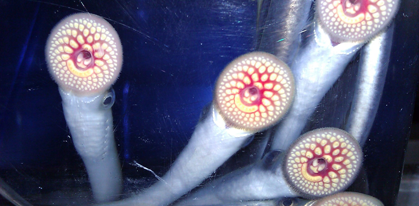 Studying lampreys allows biologists to envision the evolutionary past, because they represent an early offshoot of the evolutionary tree, before sharks and fish. Despite their inconspicuous appearance, lampreys have a sophisticated immune system with three types of white blood cell that resemble our B and T cells, researchers have discovered.
Studying lampreys allows biologists to envision the evolutionary past, because they represent an early offshoot of the evolutionary tree, before sharks and fish. Despite their inconspicuous appearance, lampreys have a sophisticated immune system with three types of white blood cell that resemble our B and T cells, researchers have discovered.
Scientists at Emory University School of Medicine and the Max Planck Institute of Immunology and Epigenetics in Freiburg have identified a type of white blood cell in lampreys analogous to the “gamma delta T cells” found in mammals, birds and fish. Gamma delta T cells have specialized roles defending the integrity of the skin and intestines, among other functions.
The results are published in the journal Nature. The finding follows an earlier study showing that cells resembling two main types of white blood cells, B cells and T cells, are present in lampreys.




